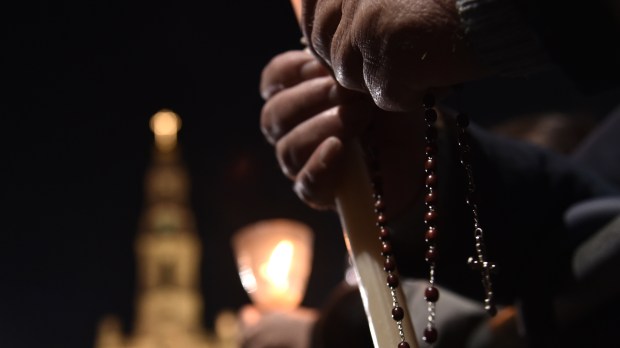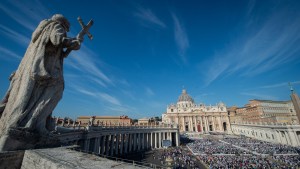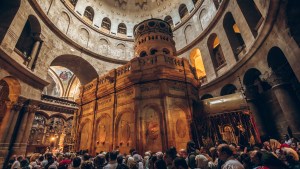Within Christianity, and particularly in the Catholic and Orthodox traditions, distinct forms of veneration or reverence can be found, each one of them carrying specific connotations and finding different devotional expressions. These expressions (more like “levels of veneration”) are traditionally known (in the original Greek) as dulia, proskynesis, hyperdulia, and latria.
It should be noted that Christian theologians have long reserved the last term, latria, for the type of worship due to God alone. These other three types of veneration (dulia, proskynesis, and hyperdulia) are used to refer to the veneration given to angels, saints, relics, icons, and the Virgin Mary. Indeed, veneration is a type of honor distinct from the true worship (that is, adoration), which is due to God alone.
Dulia
Dulia is the most fundamental level of veneration in Catholicism – and in broader Christianity. It is the regular form of honor and respect that is given to saints, angels, and some other holy figures (including relics, and perhaps even places associated with the lives of these saints), but never to the same degree as the adoration reserved for God alone. Dulia involves the veneration of these figures as role models and intercessors, acknowledging their exemplary lives, trying to follow their example, and asking for their prayers.
Hyperdulia
Hyperdulia is a unique form of veneration specific to the Virgin Mary. It is a level of reverence that is higher than dulia but distinct from proskynesis. In hyperdulia, Mary is honored as the Mother of God and given an exceptional place of honor among all the saints and angels – given her decisive role in the history of salvation, as she bore the Son of God. Hyperdulia acknowledges her unique and blessed status as the Theotokos – the God-bearer.
Proskynesis
Proskynesis is a profound form of veneration that, at least in Catholicism and other strands of Christianity, is somewhat reserved exclusively for God – although the term has had many different uses throughout history, as is often the case with religious, legal, or administrative categories.
Proskynesis has often been translated as adoration, but that is not entirely accurate. In this expression of worship, individuals demonstrate reverence, devotion, and a sense of awareness of being in the presence of the divine. As such, it can denote the kind of veneration that is given to saints, but proskynesis also applies to icons and relics.
The word itself is derived from the Greek verb proskyneo, which is in turn comprised of two words: pros (towards) and kyneo (to kiss). It describes an attitude of humbling and submission. The practice, which seems to be of Persian-Babylonian origin, implied the recognition of the (often divine) authority of a sovereign ruler. As such, it entered the Byzantine liturgy as a common gesture of supplication or reverence. In Christianity, the physical act of proskyneo can range from full prostration to a genuflection or a relatively simple bow.
These distinctions between dulia, hyperdulia, and proskynesis are helpful for a proper understanding of the many subtle yet decisive differences at play in Catholic theology and practice. They underline the central tenets of monotheism, emphasizing the worship of God alone (latria) while venerating and seeking the intercession of saints and the special honor given to the Virgin Mary.



